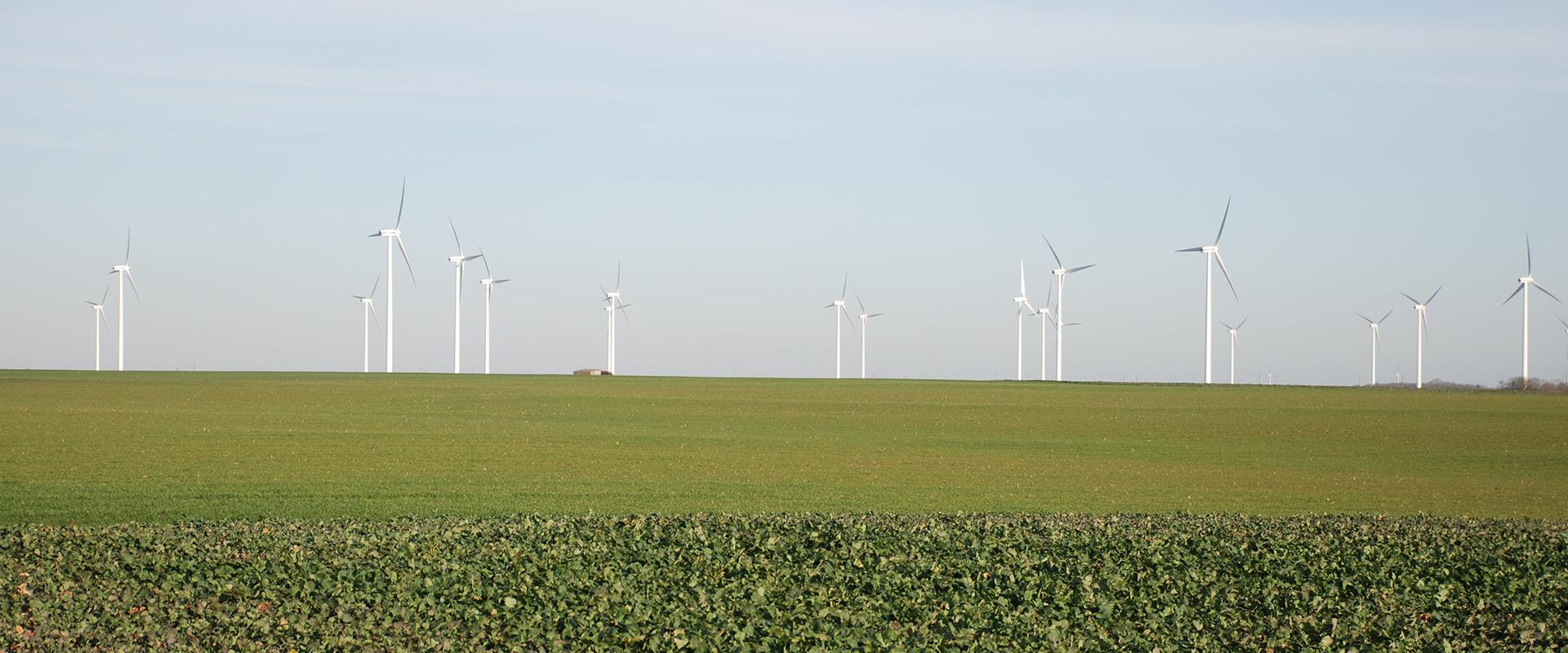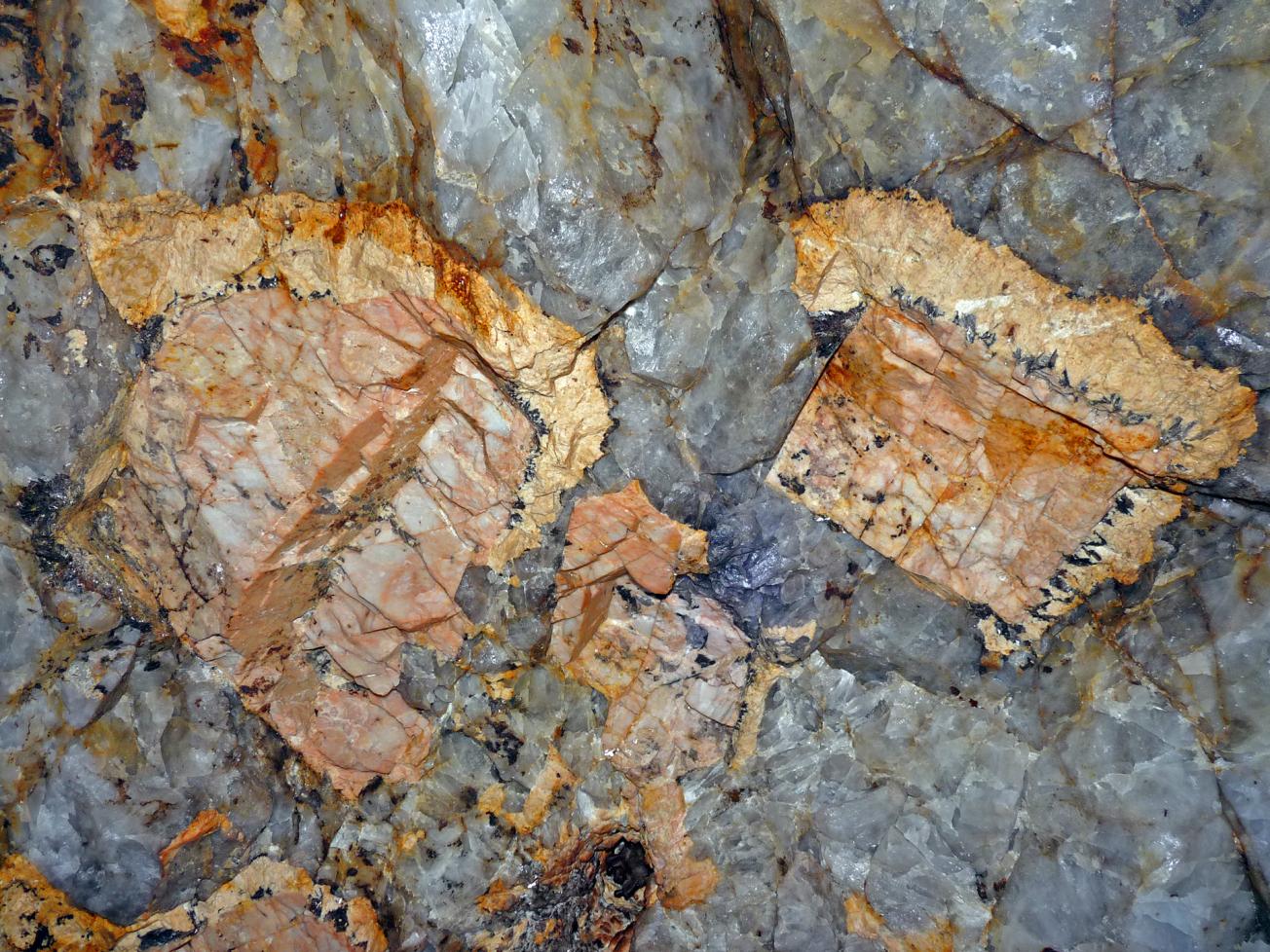
Pegmatites are rocks containing minerals (such as lithium) that are used for green technologies (e.g., lithium batteries for electric vehicles) (Haute-Vienne, 2015).
© BRGM - J. Duron
Which materials and minerals does France need for its energy transition?
The energy transition of European countries requires an ambitious change in the energy mix in order to reduce carbon emissions, which will lead in turn to a greater proportion of renewable energies, the use of electricity for transport and also a reduction in certain energy-intensive items, particularly for buildings.
This transition will not be neutral in terms of demand for either structural materials (steel, concrete, copper, aluminium) or rare metals (cobalt and lithium for batteries, certain rare earths for the generators of some types of wind turbines, etc.), hence the initial question behind the project Surfer and one that several countries are also asking themselves: will the energy transition replace the dependence on fossil fuels and fissile fuels with a dependence on metals?
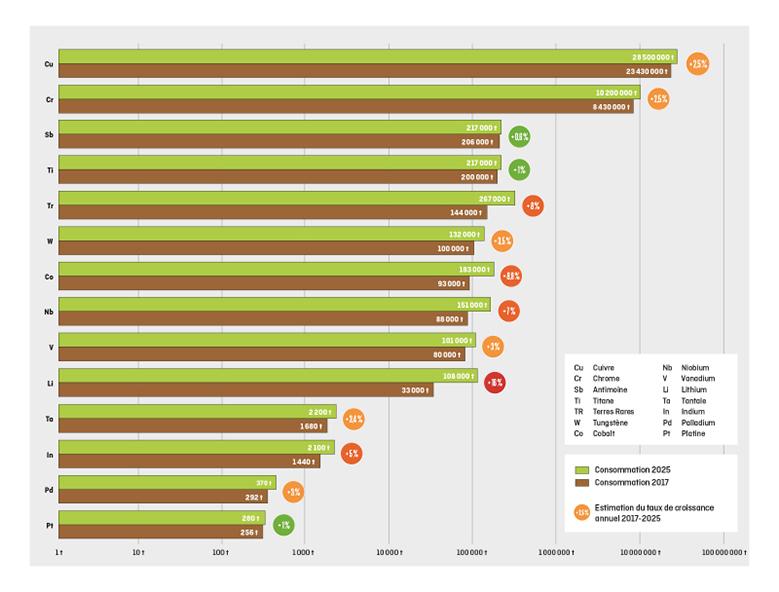
Comparative assessment of the growth in global demand for different metals involved in the energy transition between 2017 and 2025. Logarithmic scale.
© BRGM / Source : Krysmine et COMES (Committee for Strategic Metals)
The Surfer Project
The Surfer project provides some answers concerning the feasibility of the French energy transition in terms of the resulting mineral, energy, water and soil requirements. The project involved assessing the “intensity” of these raw materials in the various technologies needed for the energy transition in France, over the period 2015-2050. In other words, the mobilised amounts of minerals (metals and those used in concrete), energy materials (fossil fuels, uranium), water and soil in relation to the power rating of the facilities.
Between 2016 and 2020, BRGM produced a large database which will be used in particular by the CNRS, as part of this project led by Ademe, to model three energy-mix scenarios for 2050: 90% renewable electricity, 50% nuclear-produced electricity and the status quo.
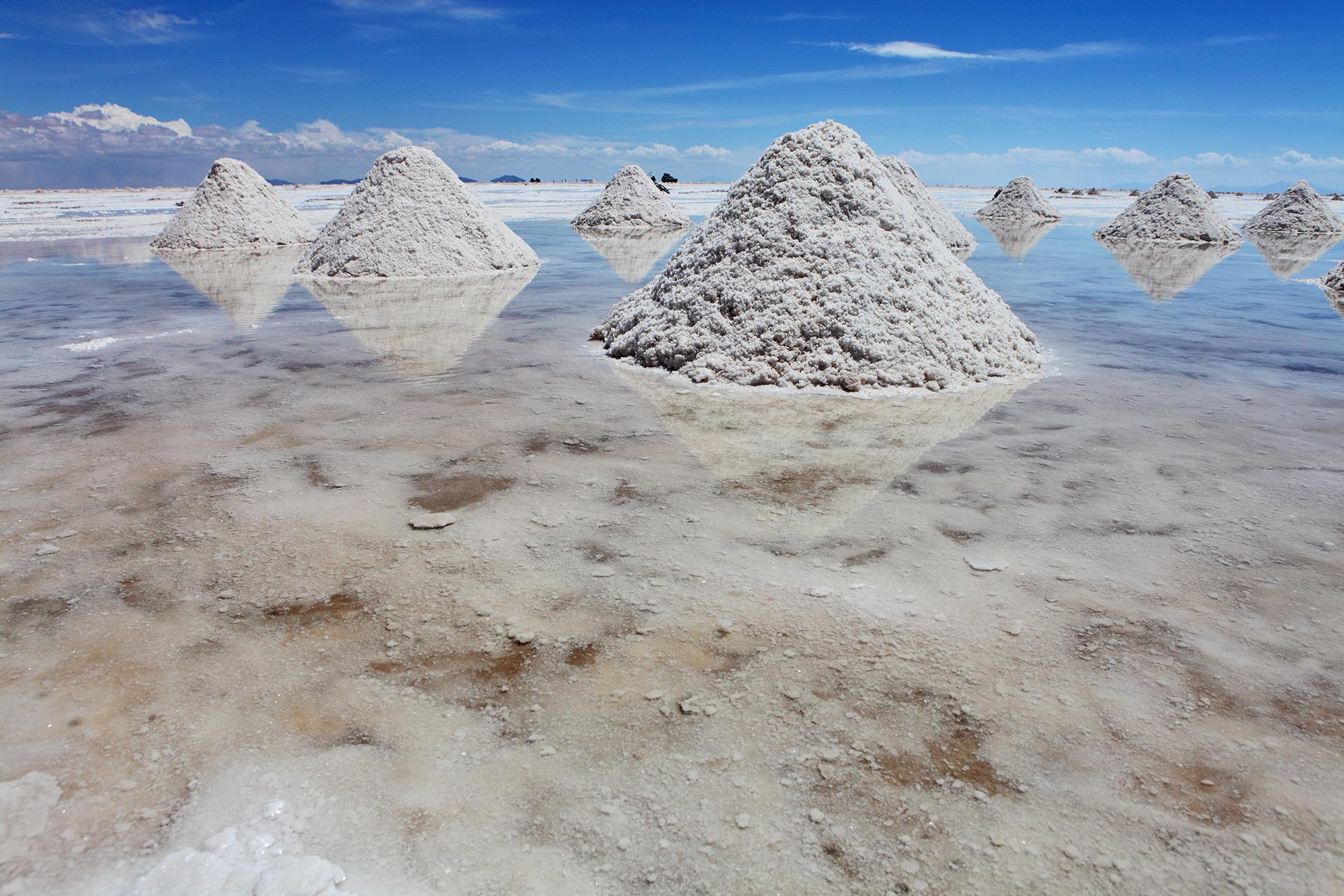
The ultimate purpose was to shed light on whether it would be more relevant to use one technology than another within these scenarios, on the basis of the intensity criterion of raw materials
As comprehensive a study as possible
All the technologies involved in the energy transition have been taken into account in this study. In all, at least 33 technology sectors were studied, covering almost the entire energy system. They include those linked to energy generation, i.e., electricity, gas, heat and fuels and to energy transmission to users, i.e., electricity and heat networks, and also to energy storage, in batteries for example, and to energy use, i.e., its final consumption, mainly in the building and transport sectors.
Here too, BGRM has endeavoured to be as exhaustive as possible by including “structural” substances in its study (copper, aluminium, iron and concrete) along with technological substances (lithium, cobalt, nickel, manganese, silicon metal, neodymium and praseodymium) as a top priority due to supply problems, but also other metals (zinc, lead, silver, indium, tungsten, chromium, etc.) and various other elements (such as nitrogen, phosphorus, potassium, selenium, zirconium).
The data came from several sources: scientific publications providing inventories of products and technologies or comparisons between sectors, technical reports from international, European or French institutions, manufacturers' technical data sheets, impact studies of facilities, life cycle analyses, etc.
While there was a wealth of literature on recent technologies such as wind power, photovoltaics, electric vehicles and batteries, which was sometimes difficult to summarise, the data on materials required for other technologies, particularly emerging technologies such as marine energy and older technologies such as coal-fired power stations, were scarce or even non-existent.
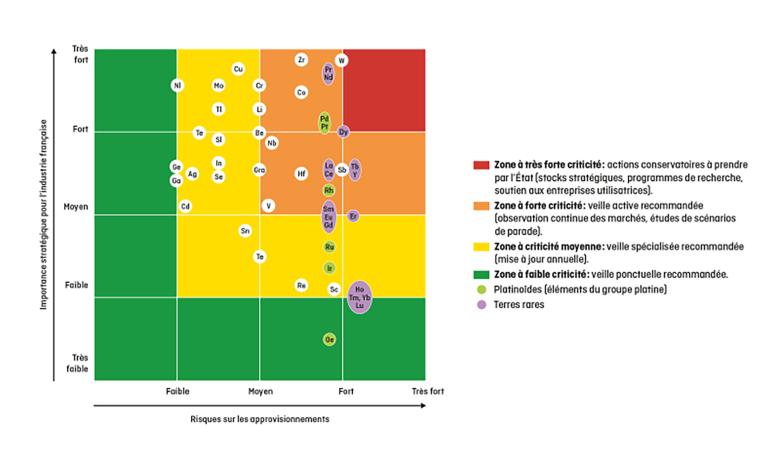
Criticality assessment matrix developed by BRGM as part of the work of the Committee for Strategic Metals (COMES). Substances studied and ranking, updated in 2020.
© BRGM/Source : COMES
A strategic decision-making tool
The material intensities were defined by assessing the 'direct' needs in all sectors while taking particular care to include all activities within their perimeters, so that the material intensities would be comprehensive and thus comparable in terms of functional unit. These intensity values were then complemented by taking the criticality level of each substance into account in the analysis, on the basis of our knowledge of the markets and future potential, particularly recycling, which could help reduce the need for raw materials.
A deliverable from this ambitious study, a compendium of material intensity values of energy system technologies in France, was published on the Ademe website in May 2021. The material intensities correspond to the amount of mineral matter (for about ten substances) as well as the water, energy and soil mobilised for a given energy performance.
Based on current knowledge, this is a strategic decision-making tool for the technological sectors of the energy transition with respect to the conditions for procuring metals and materials. The report is the result of an extensive survey of the existing literature (with more than 200 references analysed). It has sought to make the data more reliable, to warn of any lack of representativeness and to distinguish between sub-technologies. Subsequently, material intensities could be used to estimate the flows and stocks of materials mobilised under different energy scenarios and to study the corresponding supply-line risks.

